Electric bikes are an increasingly popular way of commuting, exercising, and spending recreational time.
Like regular cyclists, e-bikers must follow the law and principles of road safety. However, there are additional considerations specific to e-bikes.
The higher weight, extra power, and faster acceleration of e-bikes mean additional risks that riders must be aware of in order to stay safe.
In this article, we will explore ten e-bike safety tips to help you ride carefree and responsibly.
Are Electric Bikes Safe?
Electric bikes can be dangerous if used irresponsibly or by those without the required skills. However, they are perfectly safe when used appropriately and with care.
An e-bike motor allows you to accelerate faster and ride at higher average speeds, especially on Class 3 e-bikes (28 mph limit). Unfortunately, this extra speed and acceleration make it easier to lose control if you’re inexperienced.
Namely, for cyclists over 75 years of age, the injury risk on electric bikes was twice the injury risk on conventional bikes. You can read more about it in our guide to the latest ebike facts and statistics.
Riders should practice the safety tips outlined in this article and follow the local laws set out by the state and country, as these guidelines are in place to protect you and other road users.
- Related guide: Do You Need a License for an Electric Bike?
Our 10 Best Electric Bike Safety Tips
1. Go Slow and Hone Your Riding Techniques
When you start out riding, it’s important to take it slow and hone your riding techniques. The extra acceleration and power of an e-bike take getting used to, especially in case of hub-drive models, which can have overwhelming power.
Begin practicing in a quiet, flat area. Start with pedal assistance (PAS) on the lowest setting. Get accustomed to the lower PAS settings and build up to faster speeds as you gain confidence.
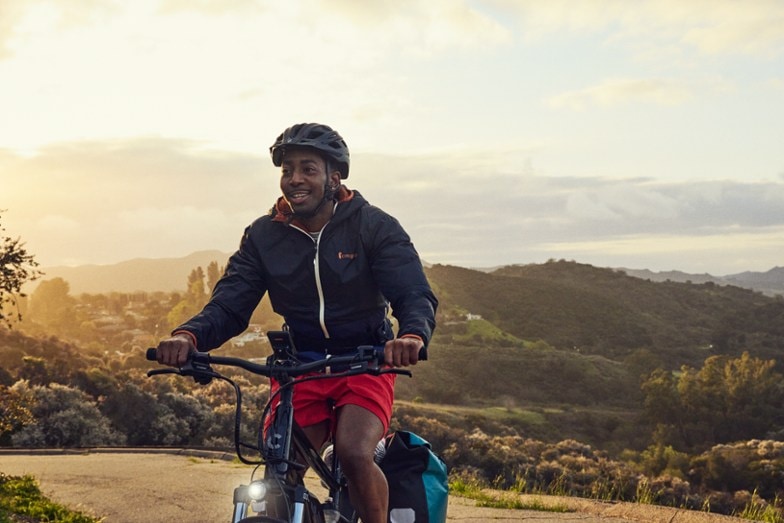
If you’re new to riding ebikes, take it slow and have fun and before trying to max out the speed. (Source: Cannondale.com)
Start by getting used to shifting up and down the drivetrain. Most e-bikes have single-chainring drivetrains, so there is a single shifter on the right handlebar, making it easier to change gears.
Shift down to an easier gear when approaching a stop or rise in the road ahead. Shift up when you’re about to descend. The goal is to maintain a consistent cadence between 80 and 100 rpm.
Finally, practice braking and get accustomed to your ebike brakes. In the US, the left brake lever controls the front and the right side the rear brake. Use them both equally when braking.
Become familiar with the sensitivity and braking distance, especially if you’ve never used disc brakes. Practice emergency braking and always brake before you reach a corner, not when you’re already in the corner.
2. Ride Defensively
When it comes to a head-to-head between a cyclist and a ton of steel, the cyclist never wins, so riding defensively is vital for electric bike safety.
Give plenty of space and be predictable, making intentions clear with plenty of warning. Use the appropriate hand signals and give verbal or auditory cues to pedestrians.
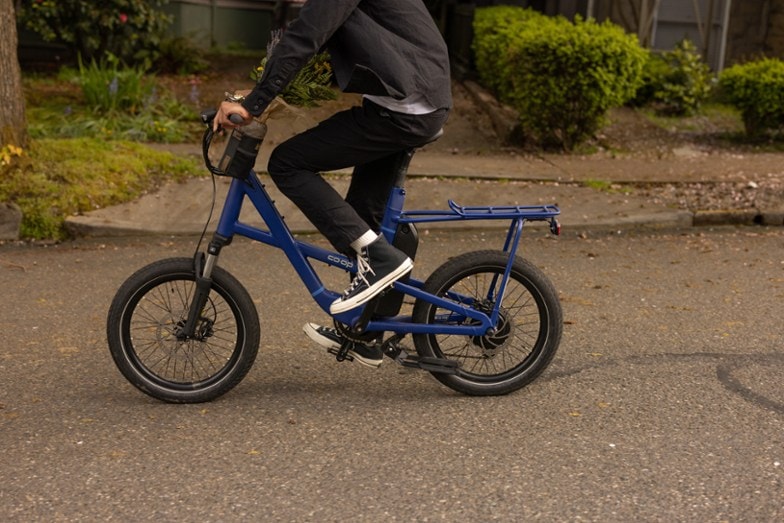
Riding defensively means keeping your distance from others in traffic, trying to anticipate their next move, braking early, and riding more slowly. (Source: REI.com)
If a car can fit in another car’s blind spot, a cyclist is easily missed, especially when traveling at high speed or riding in periods of low light.
Keep an eye on the road and path ahead and expect the unexpected when riding alongside other traffic or pedestrians. Busy cities and town centers are rife with potential hazards, so always pay attention.
Be particularly aware at busy intersections, on streets lined with cars, in school zones, and when approaching blind corners.
Another consideration for riding an e-bike is that other road users may not expect you to be traveling as fast as you are (up to 28 mph), especially while on an urban-style bike wearing regular clothing. As a result, they may think they have more time than they do. This could lead to them cutting you off suddenly when switching lanes or turning.
3. Wear Proper Safety Gear
Helmets make a big difference in the unfortunate event of a crash. Your brain is one of the most sensitive organs in your body, and impacts can have life-changing or life-ending consequences.
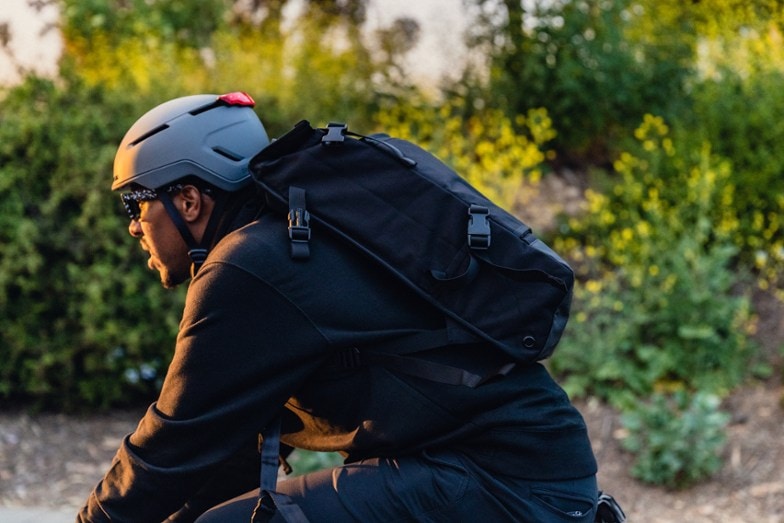
Wear a helmet at all times, even for short rides. This will greatly increase your ebike riding safety. (Source: REI.com)
Always wear a helmet bought from a bike shop or reputable seller online to ensure it is CPSC certified. In addition, you can search for electric bike helmets with the NTA 8776 e-bike safety standard, which denotes extra protection for riding at high speeds.
Other helmet technologies such as Mips, KinetiCore, and WaveCel provide additional rotational impact protection.
Choose a helmet that suits your riding style and fits snugly but comfortably. Some commuter helmets even have lights or mounts for lights.
4. Ensure High Visibility
Being visible is essential to staying safe. If other road users cannot see you, they cannot protect you.
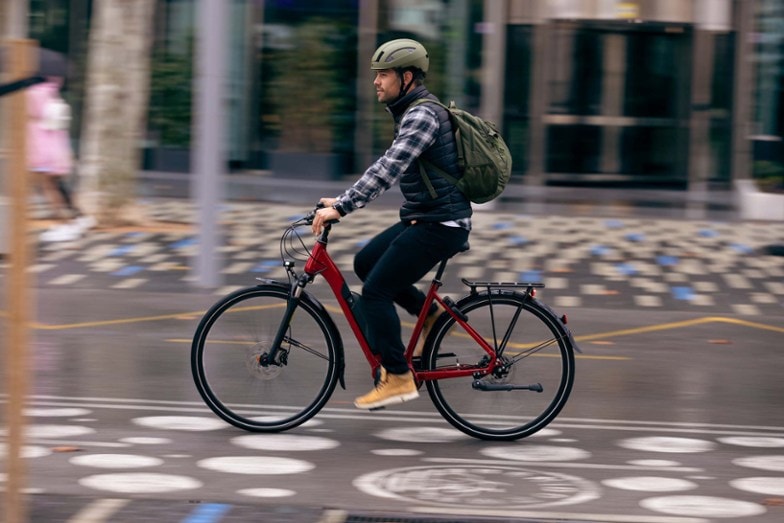
Avoid wearing neutral and dark colors when riding your ebike as this will make you significantly less visible. Always wear at least one article of high-visibility clothing. (Source: REI.com)
Many urban electric bikes have upright geometry that offers good visibility and makes you more visible to other road users. In addition, e-bikes typically have integrated lights that run whenever the bike is on. If not, buy them.
Riders should also own one piece of reflective clothing, such as a lightweight reflective strap vest to put over a jersey or sweater or a fully reflective jacket. Opting for bright clothing is also helpful for other road users.
5. Keep Up with Routine Maintenance
Regular electric bike maintenance is necessary to ensure your bike is safe for use and to help prolong its lifespan. Ensure your tires are inflated to the manufacturer’s specified range and replace them when the tread is bare.

Keep your drivetrain clean and lubricated, tires inflated, and brakes adjusted whenever you go for a ride. (Source: Cannondale.com)
Keep your brakes adjusted and working correctly so you can stop safely and consistently each time you ride. Always double-check that your lights are working before you ride and replace them or have them fixed if they stop working.
Don’t ride your electric bike if the electronics make strange noises. Putting damaged electronics under excessive load or getting them too hot can result in an e-bike battery fire.
Noise in the drivetrain is more common and usually indicates that the parts need maintenance or replacement.
6. Lower Your Riding Speed
Again, e-bikes are faster than traditional ones, which can be dangerous for inexperienced riders. Therefore, it’s essential to ride at a speed that you’re comfortable and experienced riding at.
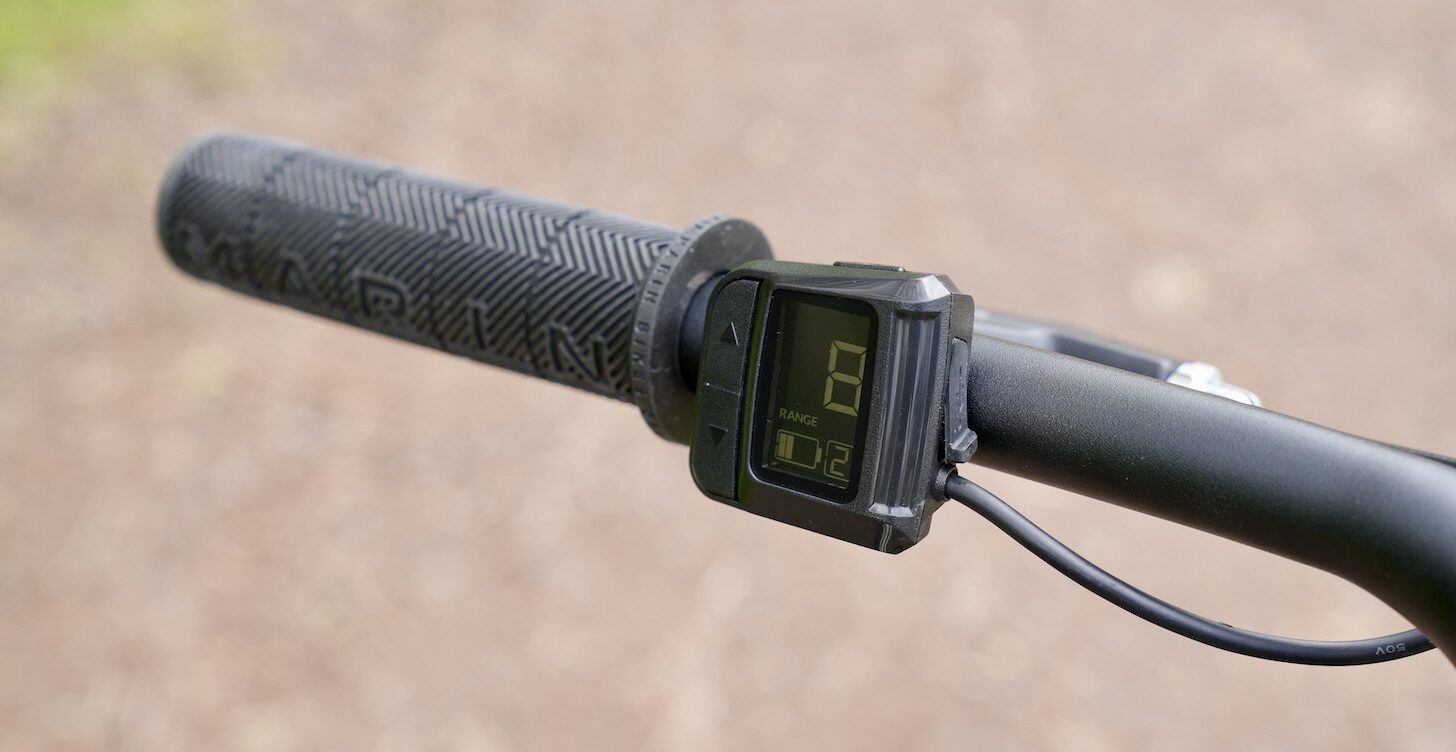
Ebikes can be faster than regular bikes, but that doesn’t mean you should ride full-speed if you’re not confident enough. (Source: Marinbikes.com)
Build up to using the higher PAS levels over time. You can usually change the bike’s top speed in the settings to limit the speed you reach. This is also how to make your ebike faster, but avoid the temptation to do it if you’re an inexperienced rider.
Be aware of the power of the throttle and the top PAS levels, which can cause you to accelerate quickly and fall or lose control of the bike. This is especially relevant when starting from a stopped position.
There is rarely a need to ride at the top speed of an e-bike in an urban environment, so wait till you’re on open roads to max out your e-bike.
7. Brake Earlier than Usual
E-bikes are heavier and faster than regular bicycles, which means increased stopping distance.
If you’re used to braking with a standard bike, getting used to the extra stopping distance takes time. For this reason, you should begin braking earlier and gradually so you can stop safely and stay in control.

Ebikes are heavier than regular bikes, so you need to make sure to brake earlier than you usually would. (Source: Marinbikes.com)
Again, anticipating what’s happening on the road ahead will give you the best chance to brake with enough time to stop safely.
The faster you go, the longer the stopping distance, which doesn’t increase linearly. You should also factor in if the terrain is wet, the type of surface it is, and the type of tires you’re using.
Another consideration is that e-bike brakes are usually quite sensitive, especially if you’re not used to riding with rim brakes. Discs, especially hydraulic ones, can be extremely powerful, so it’s important to brake gradually, with even pressure on each lever.
8. Be Careful When Mounting and Dismounting
E-bikes can be tricky to mount and dismount if the bike is heavy or the rider isn’t strong, as they aren’t very stable, especially with cargo on board. Likewise, it’s more difficult to mount if your bike has a step-over frame, as it requires the flexibility to swing your leg over.
Thankfully, most electric bikes that aren’t designed for performance have kickstands. You can deploy the kickstand before dismounting to ensure it’s stable (if the surface is solid). If you have mobility issues, choose a step-through electric bike if possible.
9. Ride on Bicycle Lanes and Bike Paths When Possible
The quantity and quality of cycling infrastructure in any given area varies hugely, with some cities offering broad networks of cycling paths or lanes and others none at all.
If possible, plan your routes to use as much cycling infrastructure as possible, as this will keep you away from high-speed traffic or completely separate from vehicles and make your ride much safer.
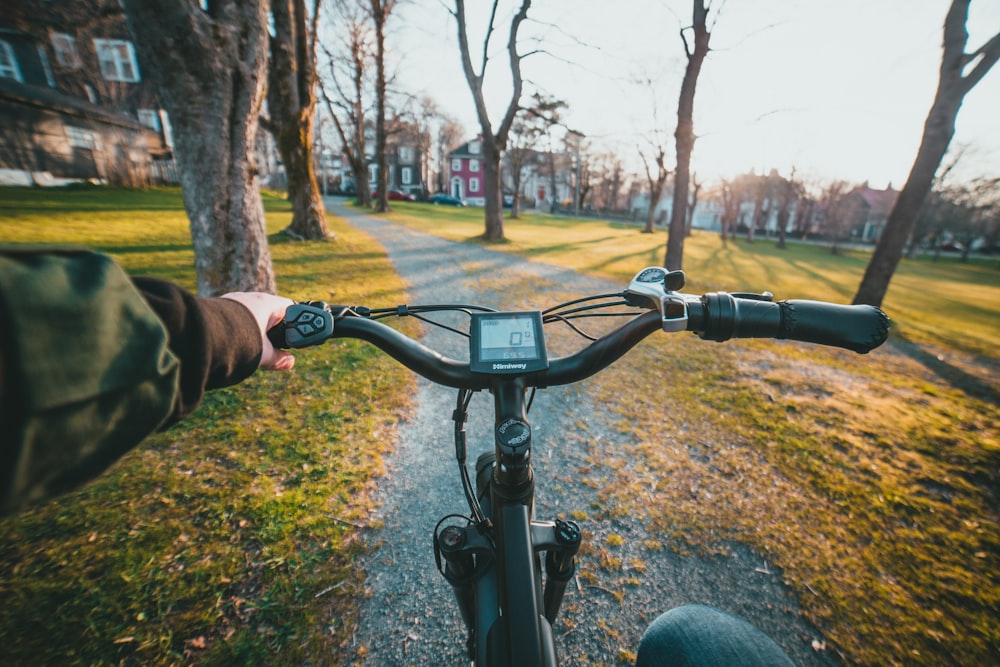
Staying away from traffic and riding on bike paths when possible will greatly improve your safety.
If you must use regular roads, stay right when it’s safe to do so but feel free to take the center of the lane when appropriate, such as if there are lots of cars lining the street, if you’re about to turn left, or if the roadside surface is unsafe.
Again, use hand signals, verbal calls, and a bell or horn when riding your e-bike to ensure that other vehicles, cyclists, and pedestrians can anticipate what you’re about to do at all times.
10. Obey the Traffic Laws
Road traffic laws are in place to keep road users safe and minimize the likelihood of accidents. Cyclists are subject to the same laws as motor vehicles, so pay attention (don’t use your phone while riding), obey stop signs and traffic lights, follow right-of-way rules, and give the appropriate signaling when you’re about to carry out a maneuver.
Electric bike safety means being fully responsible for yourself and riding defensively, assuming that not every road user will obey each law. For example, always double-check before pulling out of an intersection, even if you have right of way, as a car may have run a red light.
Electric Bike Safety: Key Takeaways
In conclusion, electric bikes offer a convenient and enjoyable means of transportation, exercise, and leisure.
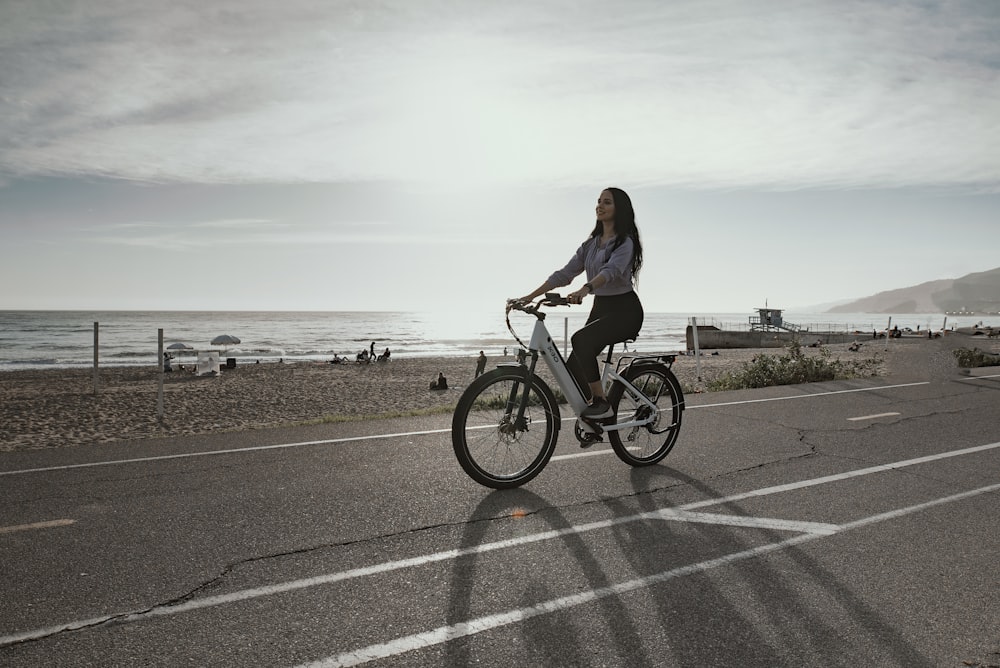
However, to ensure a safe riding experience, it is crucial to follow our ten safety tips, which include honing your riding skills, wearing proper safety gear, maintaining high visibility, and obeying traffic laws.
With the right approach and adherence to safety measures, e-bikes can be both fun and secure means of getting around.
Always remember to ride responsibly and be aware of your surroundings to protect yourself and others on the road.
Read Next
Best City Electric Bikes for Urban Riding in 2023
Best E-Bike Locks in 2023: Strong and Secure Locking Options
Can You Ride an Electric Bike in the Rain?

Your Feedback is Important!